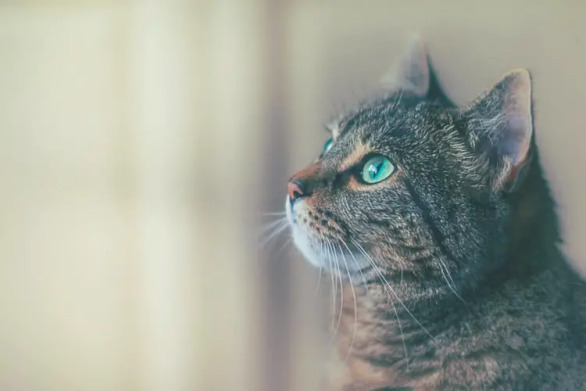It’s a familiar scene: you hear a rustling from another room, and when you peek in to investigate, you see your feline friend chewing on a plastic bag, again. You’re probably wondering why your cat likes to eat plastic and how you can divert your kitty’s attention away from the potential dangers that go along with it.
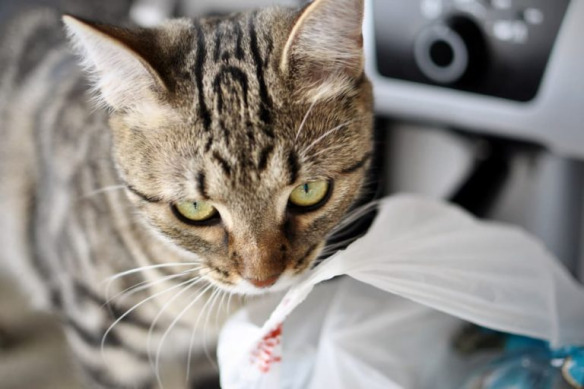
Why Do Cats Eat Plastic?
It’s true that cats are very curious creatures that can’t resist chewing and trying to eat different things.They just find everything interesting, especially if it’s something that they see for the first time. That’s why, if you’re introducing a new item to them, they very often sniff around it and try to chew it.However, pure curiosity isn’t always the answer. Here are some of the most probable reasons why your little furball wants to eat plastic.
Stress and Anxiety
Do you or any of your friends have the ugly habit of biting your nails when stressed or nervous?
Well, chewing plastic and other non-food items in your home is a similar outlet for your cats, and it has the same effect. When your cat is under stress or feels anxious, he/she may find relief in biting items in your home. This is most likely the answer to “why does my cat eat plastic” especially if you notice stress-caused behavior.

Lack of Nutrients
If your pet’s organism doesn’t receive enough essential nutrients, he/she may want to chew on other stuff to eat. It’s an impulse your cat gets because its body really misses those important nutrients to thrive. As soon as you notice that your cat doesn’t get enough nutrients, change its diet. Make sure to pay attention to what you’re feeding it with. The best thing to do is to prepare homemade cat food that is versatile and includes all food groups. In the case of feeding your pet store-bought food, take the time to read the ingredient and nutrient list.
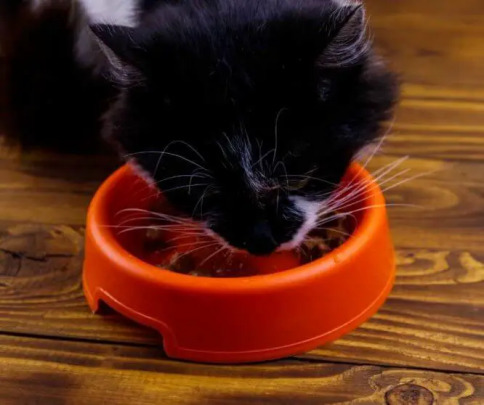
Predatory Instinct
This cause is completely irrational, and it’s really a pure reflex and instinct that your cat has.
Plastic items may seem like prey that needs to be caught for food, and that’s essentially why your pet wants to bite it. I noticed that my cat often acts like that when he sees a plastic bag moving. Since the bag is very light, it moves easily, and my cat always attacks it and tries to eat it. It’s actually very funny, but I am careful because I don’t want my cat to swallow it.
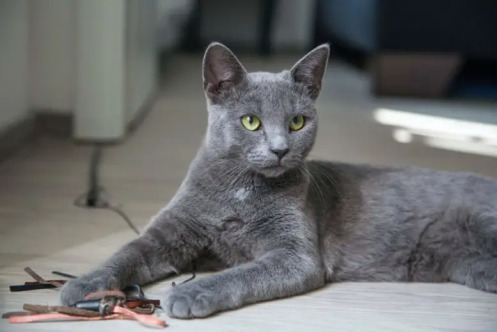
He/She Smelled Some Food
There’s another reason why your cat may want to bite a plastic bag or, for example, plastic plates, forks, etc. Most likely, your pet smelled the food that had been there. That’s why he/she wants to lick and bite that part of plastic, hoping to get a piece of that food, too. Make sure to keep these items out of reach if you know it could attract your cat’s attention because of the food.
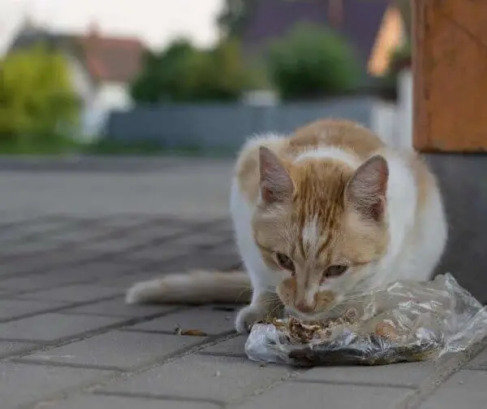
How to Do to Stop Your Kids Eating Plastic?
If your kitty is already exhibiting pica, the first thing to do is take him to the veterinarian. Discuss your kitty’s diet and bowel movements with your veterinarian, and be sure to bring up any other signs that would be considered out of the norm; some examples are vomiting or coughing. Your veterinarian will do a fecal test and a physical examination. She may also recommend lab work in order to get a clearer diagnosis.
If your veterinarian says your kitty is otherwise healthy, try the tips below to reduce pica. If these tips and the trip to the veterinarian don’t help, ask for a referral to a veterinary behaviorist.
Enrich Your Cat’s Environment
Remember: Enrichment is more than toys. It includes vertical space (resting spaces), hiding space, training, stimulation of the senses, things to chew on, and toys to hunt. Another way to keep your cat busy is to teach him some new tricks. By teaching your cat to come to you when you call him, you can call him away from negative behaviors. You can find out more about training in these books: Decoding Your Cat and The Trainable Cat.
Remove or Restrict Your Cat’s Access to Plastic
Pick up grocery bags, close doors to rooms with plastic-coated cords, and put away any stray items that might tempt your cat. You may even need to confine your cat to a room when you can’t monitor him. If you choose to give your cat his own room, make sure it has food, water, a comfy bed, a window, and lots to do.
Offer Chew Toy Alternatives
You’ll also want to get creative and offer safe items that will feel the same as plastic in his mouth. This may mean looking at chews that are intended for dogs or thinking outside of the box. Try dehydrated or freeze-dried meats or safe dog chews. If that’s not possible, give him something you know is safe for him to chew on. Cat grass or catnip are great options as long as catnip doesn’t make your cat upset. You can also use food toys to satiate his need to use his mouth. The world of toys that spill food is infinite. Just remember to introduce these to your cat slowly, and make the toy easy at first and use his favorite treats.
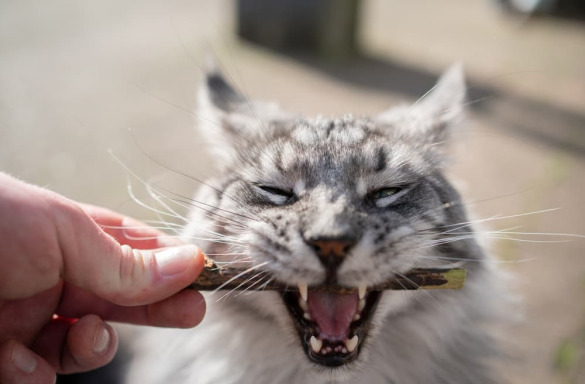
Use Bitter Sprays
If all else fails, apply bitter-tasting sprays to items that are frequently chewed or at risk of being chewed. This may deter your cat, but it will not keep him from chewing on the next, untreated item he finds. It’s unrealistic to try and spray everything that you own, so this tactic is best used in conjunction with at least one other.
